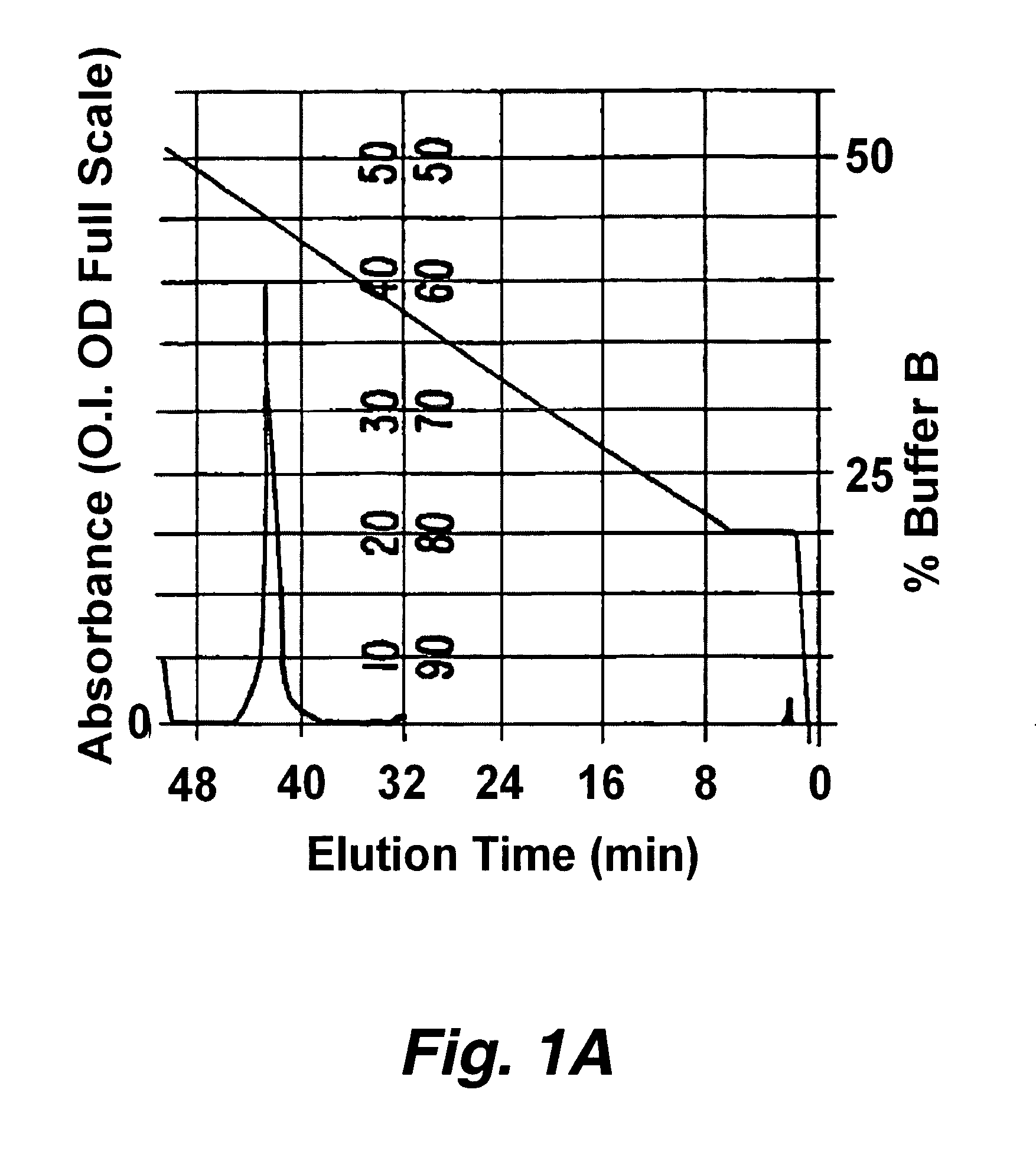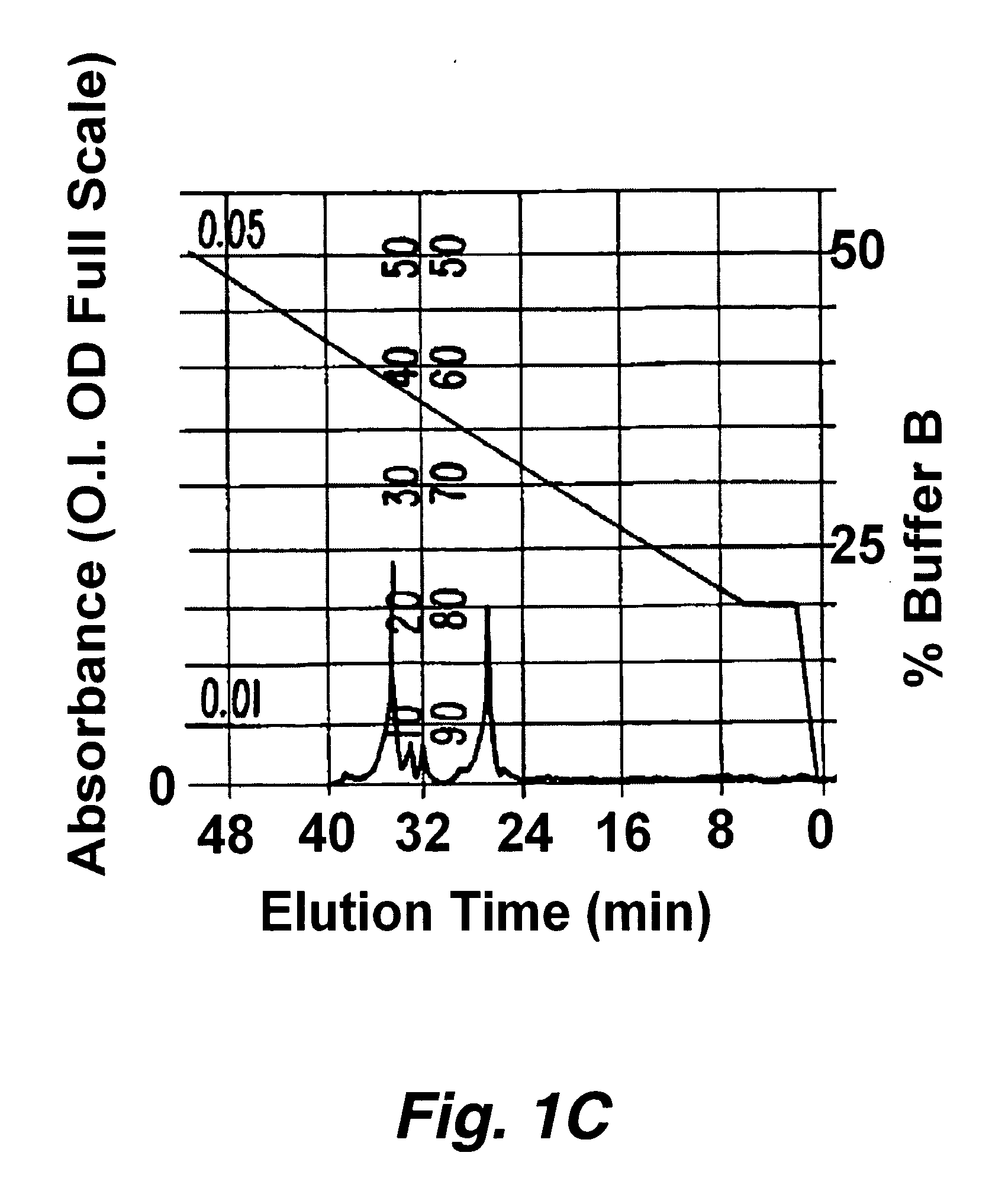Homo-doubly labeled compositions for the detection of enzyme activity in biological samples
a composition and homodoubly label technology, applied in the field of fluorogenic compositions, can solve the problems of high cost, insensitive and non-selective, difficult assays, etc., and achieve the effect of high fluorescence signal
- Summary
- Abstract
- Description
- Claims
- Application Information
AI Technical Summary
Benefits of technology
Problems solved by technology
Method used
Image
Examples
example 1
Synthesis of Fluorogenic Molecule for Detecting Protease Activity
[0192] Peptide syntheses and derivitizations were performed as described in PCT publication PCT / US98 / 03000 (WO 98 / 37226) which is incorporated herein by reference.
example 2
The Fluorogenic Protease Indicators Provide a Strong Signal When Digested
[0193] In order to demonstrate that the fluorogenic protease indicators of this invention are easily digested by a protease, the degree of cleavage was determined by assaying for the appearance of indicator cleavage products in the presence of a protease.
[0194] Approximately 1 microgram of protease indicator, having the formula F1-Asp-Ala-Ile-Pro-Nle-Ser-Ile-Pro-Cys-F2 (SEQ ID NO:219) where F1 is a donor fluorophore (5′-carboxytetramethylrhodamine (5-TMR)) linked to aspartic acid via the alpha amino group and F2 is an acceptor fluorophore (rhodamine X acetamide (R492)) linked via the sulfhydryl group of the cysteine was dissolved in a buffer consisting of 50 mM sodium phosphate, 1 mM EDTA at pH 8.9. To this solution was added 1 unit of elastase. The solution was analyzed by HPLC before and about 30 minutes after the addition of elastase. The digestion was carried out at 37° C. The HPLC separated components we...
example 3
The Fluorescence Signal was Due to Intramolecular Energy Dequenching
[0198] In order to show that the fluorescence increase observed after protease treatment was due to intramolecular energy dequenching, the signal produced by elastase digestion of the fluorogenic protease indicator was compared to the signal produced by elastase treatment of the same peptide backbone coupled to either F1 (5-TMR) or to F2 (R492). The change in fluorescence intensity of the donor fluorophore after addition of 1 unit of elastase to equal concentrations of the double-fluorophore molecule and the two single-fluorophore molecules.
[0199] The results are illustrated in FIG. 4. The double-fluorophore molecule showed nearly complete quenching initially, followed by a dramatic increase in fluorescence after addition of the elastase which reached a constant value approximately 30 minutes after addition of the elastase (FIG. 4(a)). In contrast, the two single-fluorophore molecules showed virtually no initial q...
PUM
| Property | Measurement | Unit |
|---|---|---|
| excitation wavelength | aaaaa | aaaaa |
| excitation wavelength | aaaaa | aaaaa |
| excitation wavelength | aaaaa | aaaaa |
Abstract
Description
Claims
Application Information
 Login to View More
Login to View More - R&D
- Intellectual Property
- Life Sciences
- Materials
- Tech Scout
- Unparalleled Data Quality
- Higher Quality Content
- 60% Fewer Hallucinations
Browse by: Latest US Patents, China's latest patents, Technical Efficacy Thesaurus, Application Domain, Technology Topic, Popular Technical Reports.
© 2025 PatSnap. All rights reserved.Legal|Privacy policy|Modern Slavery Act Transparency Statement|Sitemap|About US| Contact US: help@patsnap.com



